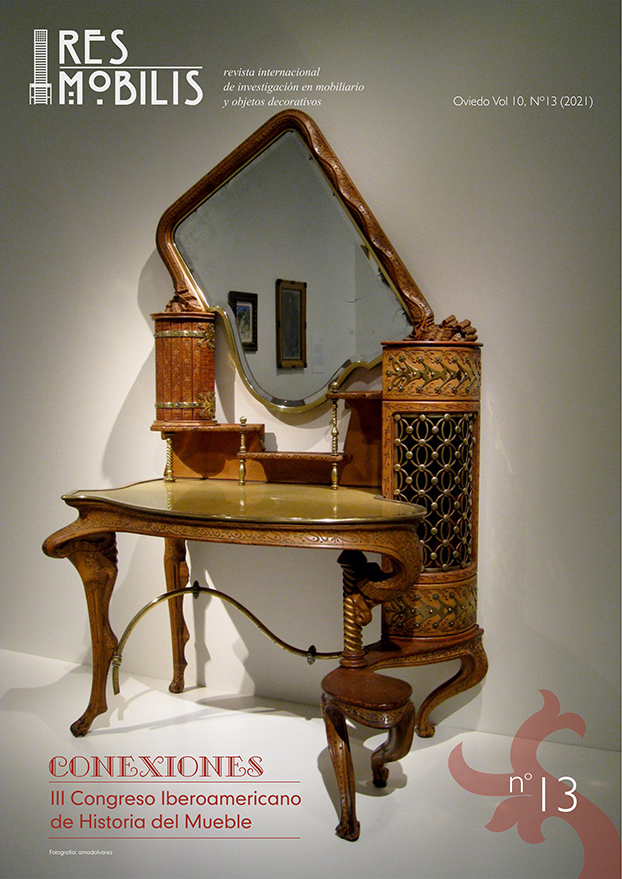Resumen
En unas pocas décadas, la era digital llegó a nuestras vidas cambiando los estilos de vida y los comportamientos sociales, obligando al mundo a repensar las experiencias diarias, incluidas las que tienen lugar en los lugares de trabajo. El nomadismo digital que facilita la movilidad y flexibilidad del trabajo satisface las exigencias de la sociedad actual y estimula el surgimiento de espacios de coworking. El diseño de muebles también necesita abordar las nuevas demandas del estilo de vida actual. En este contexto, el artículo pretende averiguar el papel que desempeñan los muebles en dichos espacios. La investigación se lleva a cabo mediante el estudio de una muestra aleatoria de espacios de coworking en Oporto. Se realizó una entrevista y una encuesta a los usuarios del espacio de coworking con el fin de identificar el denominador común del mueble en aquellos lugares teniendo en cuenta la función ergonómica de los pares/ comodidad, materiales / sostenibilidad y flexibilidad / forma como parámetros principales. El principal resultado de este estudio es atraer la atención de los diseñadores sobre la importancia del mobiliario a la hora de considerar la calidad de los espacios de coworking en sus capacidades multifuncionales en el contexto de una sociedad responsable, ecológica y sostenible.
Citas
Bates, Timothy. “Community and Collaboration: New Shared Workplaces for Evolving Work Practices.” Master’s thesis. Massachusetts Institute of Technology, 2011. Accessed March 13, 2020, https://dspace.mit.edu/handle/1721.1/66875
Chardukian, Cameron. “5 Factors to Consider When Choosing a Coworking Space.” Deskmag. Accessed May 15, 2020. https://www.deskmag.com/en/coworkers/5-factors-to-find-to-choose-the-right-coworking-space-969
Costa, Daciano. Design e Mal-Estar. Lisboa: Centro Português do Design, 1998.
Coworking Insights. “2020 Future of Work Report: What the Future Holds for Coworking and Remote Work.” Accessed September 2, 2020. https://coworkinginsights.com/wp-content/uploads/2020/05/CI_-_2020_Future_of_Work_Report__1.pdf
Cruz, Rita, Pombo, Fátima. “Sound in space as a design feature in workplace interiors.” In I. Soveral and F. Pombo (eds) EAW International Conference Synchresis-Audio Vision Tales, University of Aveiro,13-17 (November 2017): 144-153.
Cruz, Rita, Franqueira, Teresa, and Pombo, Fátima. “O design de mobiliário para cenários de trabalho colaborativo. O projeto do Design Factory Aveiro.” In Livro de Atas UD18: Invisible Design 7º Encontro de Doutoramentos em Design: 337-345. http://ud18.web.ua.pt/wp-content/uploads/2019/03/UD18_actas.pdf:
Di Risio, Alberto. “Global Coworking Growth Study 2020.” Market Size & Industry Trends, July 3, 2020. https://www.coworkingresources.org/blog/key-figures-coworking-growth
Gandini, Alessandro. “The rise of coworking spaces: A literature review.” Ephemera Journal: theory and politics in organization, Vol. 15, nº1 (2015): 193-205.
Giddens, Anthony. Sociology. Oxford: Polity Press (4th ed.), 2001.
Gillen, Nicola. Future Office: Next Generation Workplace Design. London: Riba Publishing, 2019.
Jones, Drew. “The Future of Coworking?” Open Work Agency. May 29, 2020. https://openwork.agency/wp-content/uploads/2020/05/The-Future-of-Coworking-White-Paper-OpenWork-Agency-May-29-2020.pdf
Kojo, Inka and Nenonen, Suvi. “Evolution of co-working places: drivers and possibilities.” Intelligent Buildings International, 9:3 (2014): 164-175.
Lipovetsky, Gilles. Da Leveza. Para uma Civilização do Ligeiro. Lisboa: Edições 70, 2016.
Makaklı, Elif Süyük, Yücesan, Ebru, and Ozar, Betül. “Co-Working Space Concept in the Spatial and Urban Context: A Case Study of ‘Kolektif House.’” FSM Scholarly Studies: Journal of Humanities and Social Sciences, nº14, 297-312 (2019): 297-312.
Miller, Rex, Williams, Philip, and O’Neill, Michael. The Healthy Workplace Nudge: How Healthy People, Culture, and Buildings lead to high performance. New Jersey: John Wiley & Sons, 2018.
Mouratidis, Georgios. “Digital Nomadism: Travel, Remote Work and Alternative Lifestyles.” Master diss. Lund University, 2018. Accessed March 3, 2020. http://lup.lub.lu.se/luur/download?func=downloadFile&recordOId=8948916&fileOId=8949060
O’Brien, Michelle. “Finding a home for the ‘digital nomad’.” May, 2012. http://www.michelleobrien.net/wp-content/uploads/2011/10/OBRIEN_Home_digital_nomad.pdf
OECD. Policy Responses to New Forms of Work. Paris: OECD Publishing, 2019. https://doi.org/10.1787/0763f1b7-en
Pallasmaa, Juhani. The Eyes of the Skin. Architecture and the Senses. London: Academy Group, 1996.
Rasmussen, Steen Eiler. Experiencing Architecture. Cambridge: MIT Press paperback edition, 1959.
Robelski, Swantje, Keller, Helena, Harth, Volker, and Mache, Stefanie. “Coworking Spaces: The Better Home Office? A Psychosocial and Health-Related Perspective on an Emerging Work Environment.” International Journal of Environmental Research and Public Health (2019): 1-22. https://doi.org/10.3390/ijerph16132379
Roth, Kylie and Mirchandani, Nicole. “The rise of co-working: A growing workplace movement.” Corporate Real Estate Journal, Volume 5, Number 4 (July 2016). https://www.knoll.com/document/1353024612056/wp_Knoll_CoWorking.pdf
Shared Space. “Millennials make up 65% of the global Coworking community.” Accessed February 20, 2020. https://sharedspace.work/why-coworking-works-for-millennials/
Vitra. “Soft Work.” Accessed June 20, 2020. https://www.vitra.com/en-pt/office/product/details/soft-work
Weijs-Perrée, Minou, Koevering, Jasper, Appel-Meulenbroek, Rianne, and Arentze, Theo. “Analysing user preferences for co-working space Characteristics.” Building Research & Information, Vol. 47, nº 5 (2019): 534-548. https://doi.org/10.1080/09613218.2018.1463750
“Work becomes multi-local”: an interview with Rudolf Pütz from Vitra. Orgatec News Blog - New Visions Of Work, Cologne, 25-29.10.2016, accessed November 10, 2016, http://news.orgatec.com/2016/10/work-becomes-multi-local-an-interview-with-rudolf-putz-from-vitra/
Zumthor, Peter. Atmospheres: Architectural Environments. Surronding Objects, Basel: Birkhäuser, 2006.


